Bologna: the Renaissance Saraceni House opens its collections to the public
If in Bologna, going down the left side of the Basilica of San Petronio, one takes the elegant Via dell’Archiginnasio, ancient and bustling, and then veers left into Via Farini, where traffic flows between two rows of uninterrupted porticoes that glitter with fashionable shop windows, at number 15 we come across a palace, built in the typical brick that dyes much of the city red, whose profile forms a corner between the noisy street and a more modest alley that narrows and gets lost in the courtyard of a building. We find ourselves in front of Casa Saraceni, one of the liveliest architectural testimonies of the Bolognese Renaissance.
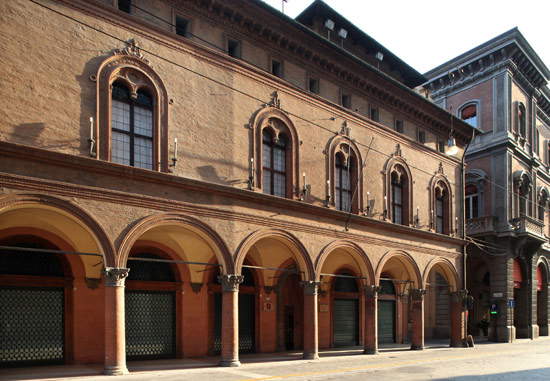 |
| Casa Saraceni in Bologna |
Built on two orders, the palace consists of a large portico whose large round arches with terracotta rings (seven in all) are grafted onto the sandstone capitals crowning the mighty columns, also made of terracotta, and of an upper floor, divided from the floor below by a severe string-course plan, recognizable by the mullioned windows framed by arches that recall those of the portico and decorated with oculi in the center of the pendentives and fanciful decorations. Above, small rectangular windows precede the wide and rich cornice, in terracotta as are all the decorative elements of the palace façade, placed to conclude the admirable essay in 15th-century architecture (even though it was built in the early years of the 10-sixth century, when the construction of brick palaces spread in Bologna on the impetus of the architectural renovations that the Bentivoglio family wanted for the city they ruled). It seems that the desire to transform the nucleus of medieval tower-houses that formerly insisted here into a modern, updated palace can be attributed, albeit with some doubts in the critical sphere, to the Felsine nobleman Antonio Saraceni, linked to the Bentivoglio seigniory and a member of the city Senate on several occasions. The events that led to the end of the Bentivoglios, between the official deposition of Giovanni II in 1506 and the vain attempt at restoration in 1511, also affected the palace, since it was chosen in 1510 as the seat of the Venetian ambassadorship that arrived in Bologna together with Pope Julius II, who worked to expel the Bentivoglios from the city in order to bring it under the direct rule of the Holy See.
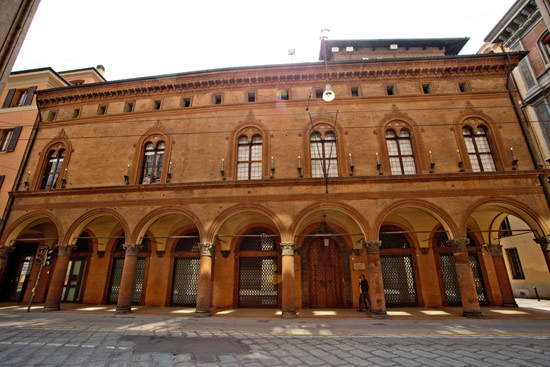 |
| Facade of Casa Saraceni in Bologna |
Over the centuries the building underwent sundry changes of ownership: it was first owned by the Cospi family, then by the Garzoni family, and in the 18th century it passed through hereditary ways to theOpera Pia dei Poveri Vergognosi, an organization in charge of caring for the decayed nobles (or, by extension, the rich), who by virtue of their former conditions considered it a disgrace to show themselves in the streets of the city to beg for alms. The Opera Pia leased the palace to the Gualandi family, which still occupied it in the twentieth century: following other transitions, in 1930 it was purchased by the Credito Fondiario of the Cassa di Risparmio di Bologna, which wasted no time in having it restored in order to give it an appearance more in keeping with the needs of the new owners. The restorations mainly concerned the interior (in fact, the exterior appearance, which had come almost intact since the time Casa Saraceni was built, was to be kept intact): the most far-reaching intervention was the fresco decoration of the vaults of the staircase, an undertaking that was entrusted to a local artist, who was quite in vogue at the time and now almost completely forgotten, Roberto Franzoni (1882 - 1960). The latter was, throughout his artistic career, faithful to an Art Nouveau style that, however, was already marking time in 1933, the year to which the commission dates. His grotesque decorations evidently did not meet the taste of the time, if indeed contemporaries made few mentions of them: it is, however, a work that reinterprets in a modern key a type of decoration particularly in vogue in the early sixteenth century (with all evidence, the choice was intended to ensure that the frescoes accorded with the era of the building of Casa Saraceni). Festoons of fruit and festive putti, nymphs and winged genii supporting panels with portraits, landscapes and allegories and, in the center of the main vaults, images of the sun and moon: these are the ingredients of Franzoni’s decorations.
Having become the headquarters of the Carisbo Foundation in 1991, today Casa Saraceni continues to serve that function, and in addition has become a cultural center, as a building entrusted with the task of preserving part of the art collections of the Foundation itself (many of the works belonging to the institution have replenished the museum system of Genus Bononiae, the project that arose to open to the public the vast collections of the banking institution and today among the main players in the city’s cultural life): works from the seventeenth century (especially from the school of Guido Reni) that go all the way to the twentieth century (the names of Arturo Martini, Alberto Viani, Nino Migliori are included), passing through the so-called “tempere della Sampiera,” a series of landscapes painted in the eighteenth century by Nicola Bertuzzi, Antonio Beccadelli and Vincenzo Martinelli and destined for the Villa Sampiera di Barbiano, owned by the noble Boschi family (they later passed into the collections of the Cassa di Risparmio). A cultural center also because Casa Saraceni carries out a continuous exhibition activity, also aimed at showing the public the latest acquisitions: among the most recent is a splendid Portia by Elisabetta Sirani, an important seventeenth-century artist from Bologna.
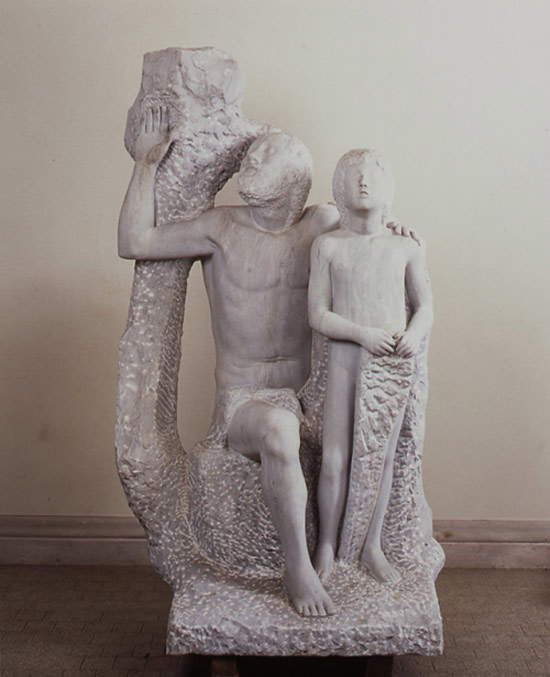 |
| Arturo Martini, Daedalus and Icarus (1937; marble, 180 x 80 x 62 cm; Bologna, Fondazione Carisbo, Casa Saraceni) |
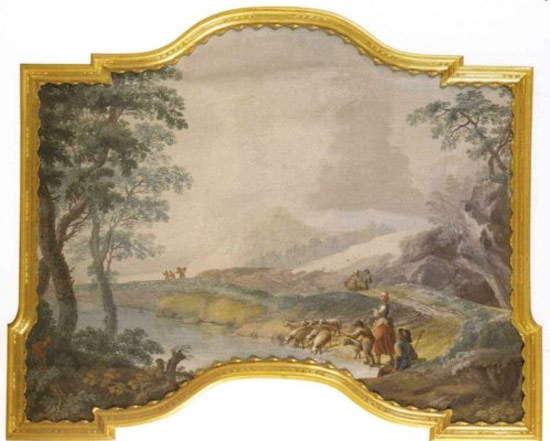 |
| Antonio Beccadelli and Vincenzo Martinelli, Landscape with Figures (ca. 1762; tempera on canvas, 81 x 120 cm; Bologna, Fondazione Carisbo, Casa Saraceni) |
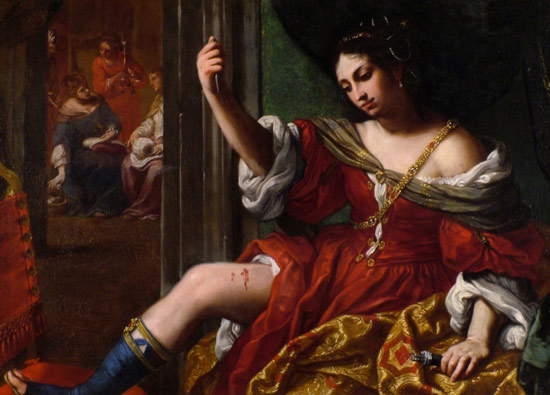 |
| Elisabetta Sirani, Portia (1664; oil on canvas, 101 x 138 cm; Bologna, Fondazione Carisbo, Casa Saraceni) |
Little known even by the Bolognese themselves, next Saturday, October 1, 2016, Casa Saraceni will open free of charge to the public with guided tours to allow visitors to learn more about its centuries-old history, the works of art preserved in it, and the activities of the Foundation. The initiative is part of the Invitation to the Palace event, which the ABI (Italian Banking Association) and ACRI (Association of Italian Foundations and Savings Banks) have been successfully promoting for the past few years in order to show the public the vast artistic heritage of member banks. Specifically, this is the 15th edition and, as every year, it will cover the entire country. The appointment at Casa Saraceni is from 10 a.m. to 12:30 p.m. and 3 p.m. to 7 p.m., and free guided tours will take place at 10:30 a.m. and 5 p.m. This is an opportunity not to be missed for the people of Bologna and for those interested in getting to know Casa Saraceni (but the invitation is also valid for all Italians who will pass through the cities affected by the event: we will try to make it happen as well), and an opportunity, for us at Finestre sull’Arte, to invite ABI and ACRI to organize more events like these and not to limit to one day a year the opening of the collections of so many banking institutions that have works worthy of being known, appreciated and admired.
Warning: the translation into English of the original Italian article was created using automatic tools. We undertake to review all articles, but we do not guarantee the total absence of inaccuracies in the translation due to the program. You can find the original by clicking on the ITA button. If you find any mistake,please contact us.




























